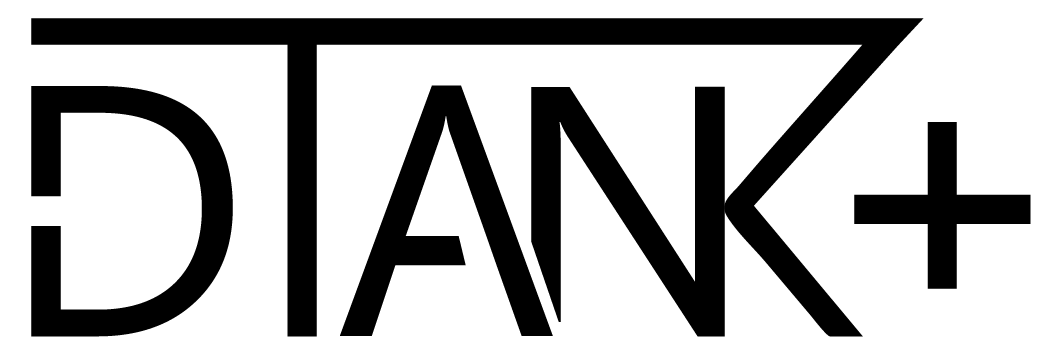A Comparative Analysis
In the aftermath of the pandemic, it seemed like everyone was buzzing about the shift to a work-from-home lifestyle. Employees began to prioritize their well-being more than we’ve seen in the past, putting pressure on businesses to reevaluate the role of physical office space and make it more conducive to their needs.
Whether it is modern, corporate, contemporary, or creative, the design of an office space plays a crucial role in shaping workplace experience and brand identity. Each design style conveys a unique message that directly reflects on company culture, as well as employee satisfaction, retention, and performance. It is important to have a thorough understanding of the different styles, as a style that works well for one company may not be the right fit for another.
Below, we have explained and compared the design philosophies of four popular styles for office spaces. We recommend using it as a guide to help you determine which design style best aligns with your company’s identity and needs.
Design Philosophies
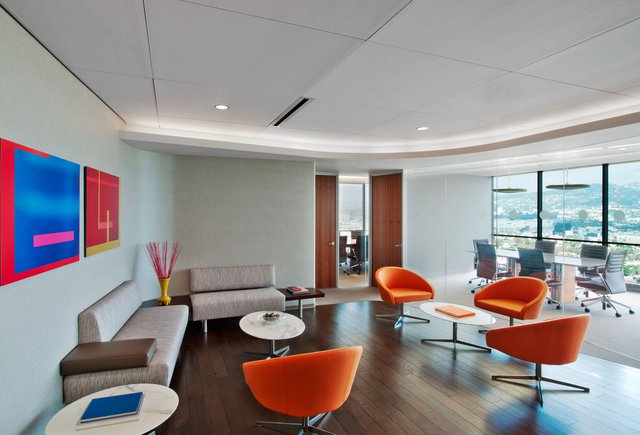
Modern Office Spaces
Modern office spaces draw inspiration from the Industrial Revolution and the first half of the 20th century. Functionality and efficiency are high priorities, which coincide with the practical, hard-working philosophy of this time period.
These spaces emphasize clean lines, symmetrical balance, geometric shapes, solid colors, warm color palettes, and strong contrast. The layout is often open, promoting easy movement and interaction among employees. Finishes range from sleek and sophisticated materials, like glass and metal, to earthy natural materials, such as wood.
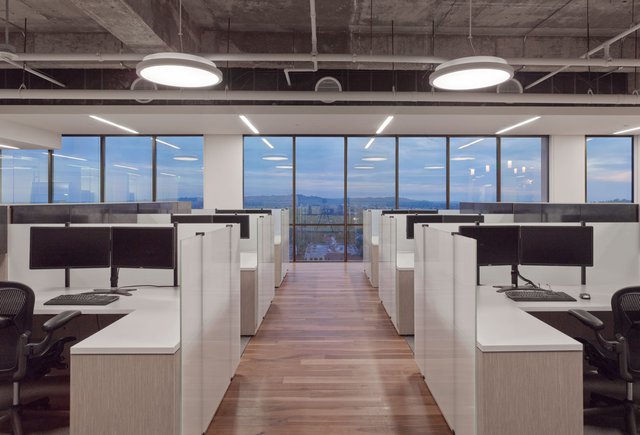
Corporate Office Spaces
While corporate offices also prioritize functionality, they are more formal and structured than modern offices. Uniformity is key, and it is infused throughout the space with repetitive colors, shapes, text, and furniture to reinforce brand identity.
Cubicles are perhaps the most notable feature of corporate office spaces. They are used in open floor plans to provide privacy for increased concentration and productivity. In the design industry, traditional cubicles are sometimes criticized for their predictability, lack of personality, and rigid look. Along with private offices, though, they help to illustrate the overarching theme of organizational hierarchy in the corporate world.
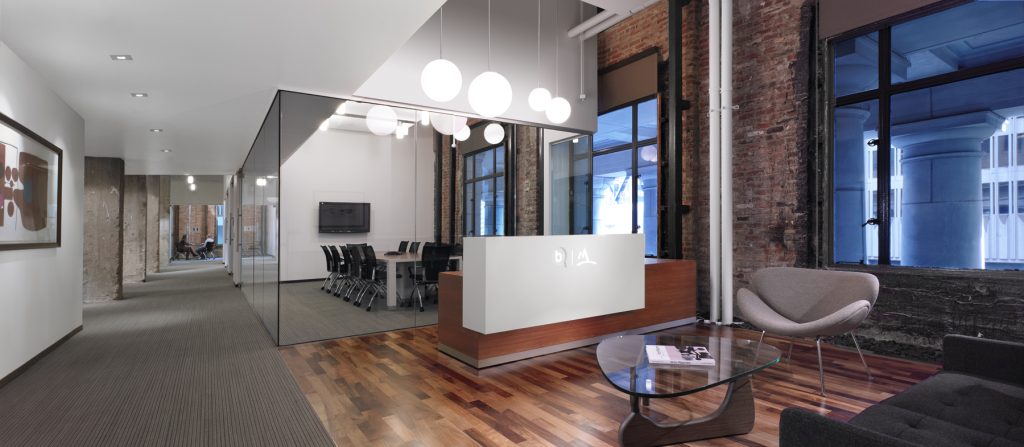
Contemporary Office Spaces
Many of you might think that a contemporary office space is the same as a modern one, but they are actually quite different from each other. Contemporary style is more open to interpretation, as it is a blend of many popular styles rolled into one. Although it is sometimes characterized by the clean lines and neutral colors of modern style, it might also feature organic shapes, Scandinavian minimalism, industrial-inspired materials, or even art deco elements.
Contemporary style provides the flexibility and adaptability to respond to current workplace challenges and specific business needs. For example, most contemporary office spaces today address the employee issue of work-life balance, incorporating amenities like relaxation zones and wellness rooms to support employee well-being. This style tends to resonate most with young employees because it usually conveys a hip vibe with a refreshing perspective that encourages employees to think outside the box.

Creative Office Spaces
Even more than contemporary style, creative offices are designed to inspire innovation, teamwork, and interaction. They are typically a combination of communal areas that can be used for collaboration, and private spaces that allow for individual focused work.
Brand identity has a strong influence on creative office spaces. The aesthetic is often vibrant and playful, with lots of customization and pieces that make a statement. Unconventional materials and artistic elements may also be used to create a stimulating environment that makes employees feel as though the sky’s the limit.
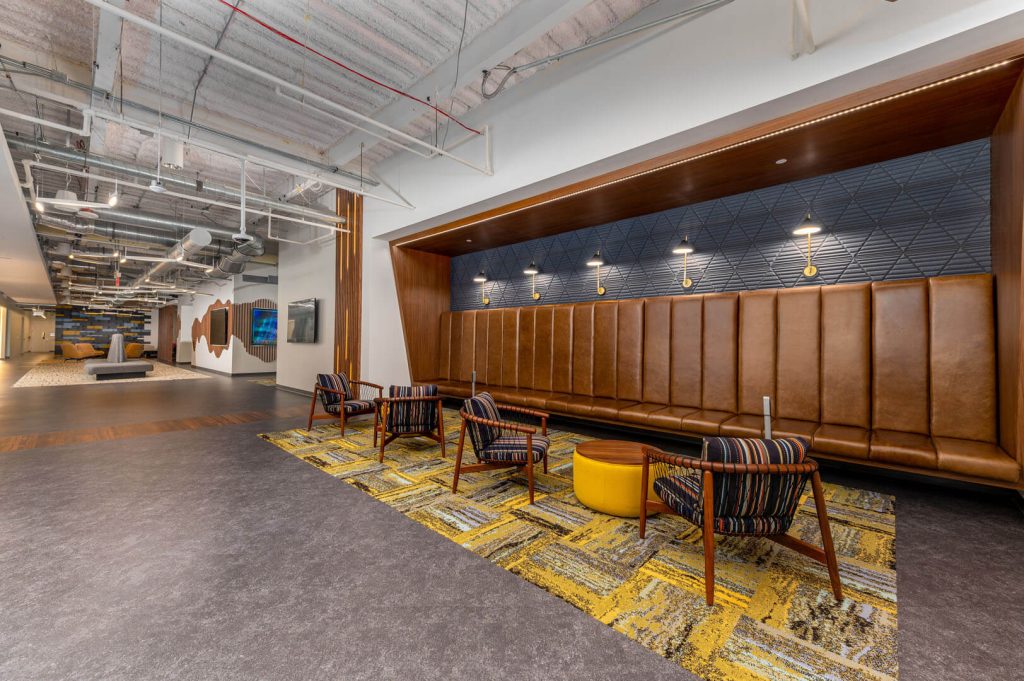
Choosing the Right Style
As you can see, each style of office space is defined by its own distinct qualities. However, one is not necessarily better than the others. Different businesses have different requirements, so we recommend analyzing your specific needs when choosing a style for your office space.
Modern offices are known for their clean and clutter-free environment that promotes productivity and efficiency, but the minimalist aesthetic may come across as too cold or unwelcoming for some companies. Corporate office spaces provide a professional and polished appearance with a clear sense of structure, but they may also feel sterile, inflexible, and a bit too traditional for creative employees. Contemporary design offers the most flexibility of these styles, especially when it comes to incorporating cutting edge ideas and technology. Just remember that the design world is always evolving and that popular styles can change quickly. Keeping up with them can be expensive to update and maintain. Creative design is another way to develop a unique and attractive office space. The emphasis on collaboration fosters free thinking and a strong sense of community. On the downside, this type of environment can be distracting for some employees and it often requires a significant investment in custom pieces to achieve a one-of-a-kind look.
Be sure to consider how each style aligns with your business goals and company objectives. For example, a tech startup may benefit from a creative office space that encourages community, while a law firm might prefer the professionalism of a corporate office. It’s also important to understand the needs and preferences of employees. Conducting surveys or establishing focus groups can provide valuable insights into the features that your employees value in their work environment.
Your company’s budget should also be taken into account. Compare the costs of implementing each style and maintaining it. Contemporary and creative spaces may require more regular updates than modern and corporate spaces, in order to keep up with a constantly changing work culture and landscape. Ask yourself practical questions like, “What are my top priorities?” “How easy is it to clean the materials I’ve selected?,” and “Will the space include custom pieces? If so, how many?” to help you determine what makes the most sense for your budget. You can also learn more about budgeting for a custom workspace on our blog.
Now that you understand the common styles used in office design, you will be better equipped to make informed decisions about the style of your own space. Thoughtful design choices will not only make the physical environment more desirable for customers and employees, but they will also contribute to your business success.
However, we know that translating company values into a design aesthetic can be time-consuming and challenging for some businesses. You are always welcome to reach out to us for professional support if you’re struggling to pinpoint the right style for your office space. Our well-rounded team of experts can help you identify your objectives and provide guidance throughout the furniture design process, from the initial stage of concept development to the final installation.


